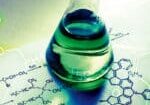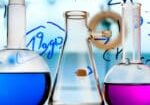Related content
Types of paint and putty

Lacquer and alcohol paint: Lacquer is derived from the resin produced by the insect known as Coccus lacca.
Lacquer and alcohol paint: Lacquer is derived from the resin produced by the insect known as Coccus lacca. Upon extracting the sap from nearby trees, specifically figs, this insect excretes a substance of a brown hue. Once it has undergone the process of purification, this liquid is commercially available as a lacquer. Shellac is considered the optimal lacquer when it has a light yellow to orange-yellow color. Practically, the lacquer and alcohol paint can dissolve varnish when combined; the higher the purity of the alcohol, the more effectively it will dissolve the lacquer.
The lacquer and alcohol paint is used in three stages:
1- First-hand paint (on canvas) to fill the empty spaces in the wood
2- Second-hand paint (coating) to create a layer of paint on the surface
3- Third-hand paint (finish): Antiquing is commonly employed to achieve a smooth finish on wood by applying lacquer and alcohol to the paint layer. Antiquing refers to the process of applying a layer of cotton or wool onto a piece of cloth. The lacquer and alcohol paint lack resistance to acid, moisture, and heat. When exposed to water, a white spot forms on the surface.
1- A sealer is a cream-colored and transparent liquid applied to wood to make its pores impermeable before applying the final paint (clear). Once the sealer is applied and allowed to dry, it reduces the paint’s absorbency and results in a hardened final coat. The sealer is diluted using a rapidly evaporating solvent and applied onto the wood surface using a paintbrush.
2- Clear paint is a translucent coating that is applied as the final paint along with the sealer. The solvent used to dissolve this paint is instant thinner. A clear coating is applied to the wood surface using both a spray gun and a brush. There are two distinct varieties of clear: matte clear and glossy clear.
3- Polyester paint is both transparent and devoid of color. This paint readily dissolves in instant thinners. Polyester paint exhibits moderate resistance to moisture, heat, alcohol, acids, oil, fat, and ink. Polyester can be classified into two categories: semi- polyester and polyester. Semi-polyester is a type of paint that falls under the category of semi-air-dry paints. It is composed of three primary constituents: paint (resin, short oils, and urea-formaldehyde), solvent (ethylene), and hardener (paratoluene). These paints are self -polishing and can be found in the market in two variations: matte and glossy. There is no thinner in polyester paints; instead, they consist of a main pigment and a hardener. The original thickness of the lacquer on the work is preserved because it does not evaporate due to not being diluted. These lacquers possess an exceptional level of transparency. Polyester is not suitable for use on woods that contain sap due to its difficulty in drying and its poor ability to accept lacquer.






